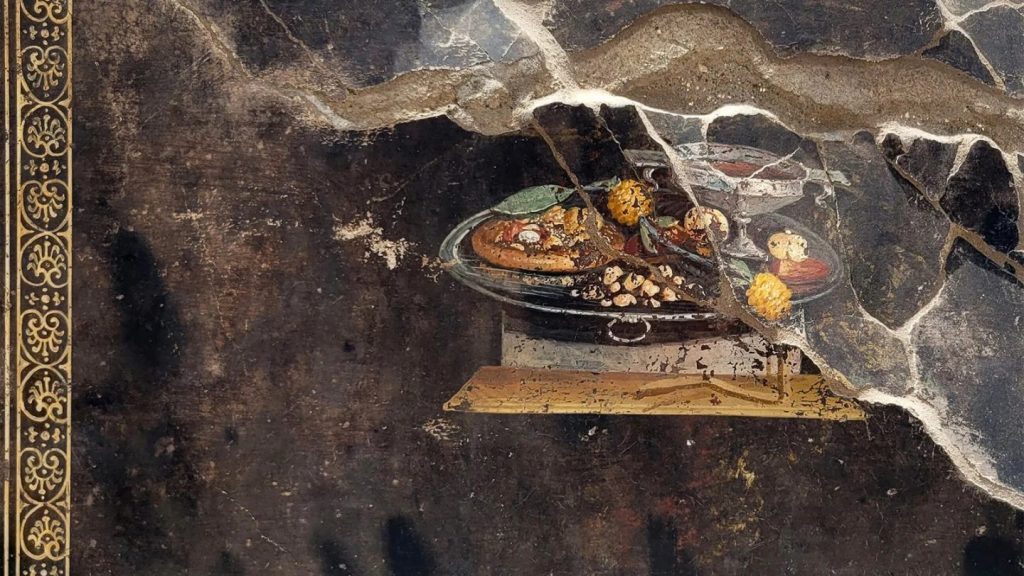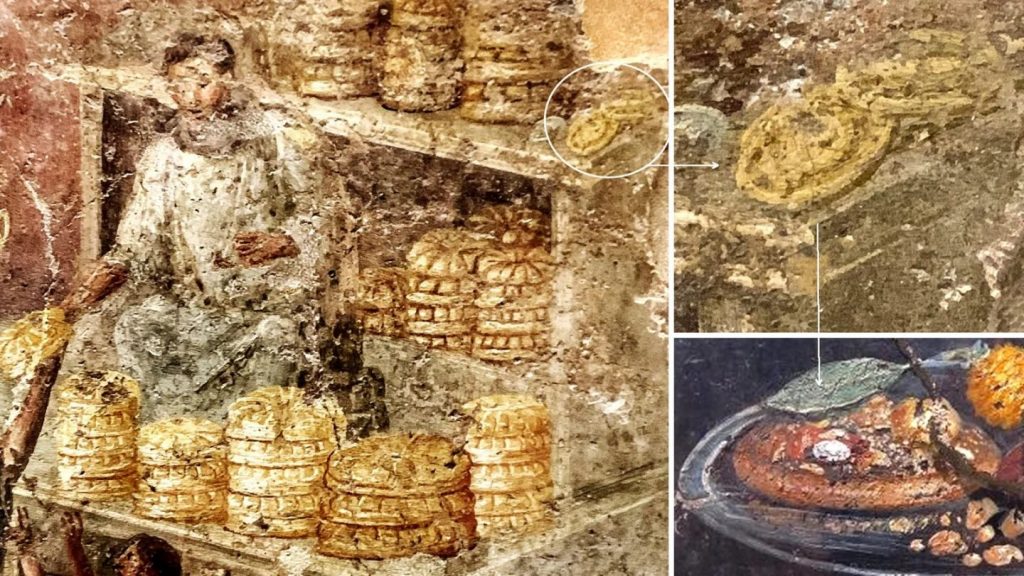A new fresco depicting an Italian flatbread has been discovered at Pompeii. Culinary archaeologist Farrell Monaco offers a recipe to make it and explains why it’s not a pizza.
By Farrell Monaco for BBC – On 27 June, the Archaeological Park of Pompeii announced that a new fresco depicting a focaccia (an Italian flatbread) had been discovered. In recent years, the site has begun excavating previously unexplored areas of the once bustling town that was buried during the eruption of Mount Vesuvius in 79 CE.
In the announcement, director Gabriel Zuchtriegel described a beautifully preserved still-life fresco depicting a cup of wine next to a focaccia on a silver tray holding various fruits and what looks like moretum, a Roman herb-and-cheese spread.
As the media caught wind of the new find, one phrase quickly rose to the top of Google search rankings: “ancient Roman pizza”. But is there enough evidence to confirm that the flatbread pictured in the Pompeian fresco is an early form of the beloved Neapolitan food? The short answer is “no”, although it’s understandable why some may initially assume, after glancing at the fresco (see image below), that these flatbreads are akin to pizza.

In the Italian version of the announcement, Zuchtriegel recalls a passage of Virgil’s Aeneid, which details the placing of fruit and other foods on top of breads (sometimes referred to as “cakes” in Greek and Roman literature) that function as “tables” (mensae, in Latin):
“Aeneas, handsome Iulus, and the foremost leaders,
settled their limbs under the branches of a tall tree,
and spread a meal: they set wheat cakes for a base
under the food (as Jupiter himself inspired them)
and added wild fruits to these tables of Ceres.
When the poor fare drove them to set their teeth
into the thin discs, the rest being eaten, and to break
the fateful circles of bread boldly with hands and jaws,
not sparing the quartered cakes, Iulus, jokingly,
said no more than: ‘Ha! Are we eating the tables too?'”
As a classical archaeologist who researches and recreates the breads and pastries of ancient Rome, I immediately knew that the image depicted in the unearthed fresco was a very important discovery. For one thing, it’s the first pictorial representation of food placed atop a circular flatbread in a Roman setting, corroborating literary references, such as the Aeneid, to this practice in ancient Roman dining.
The fresco also helps to identify a flatbread depicted in a previously known Pompeii fresco, the “bread distribution” fresco from the tablinum of the Casa del Panettiere (House of the Baker), and the two bread images in tandem provide critical information regarding how this type of bread was shaped by hand, and why it took the form it did.



